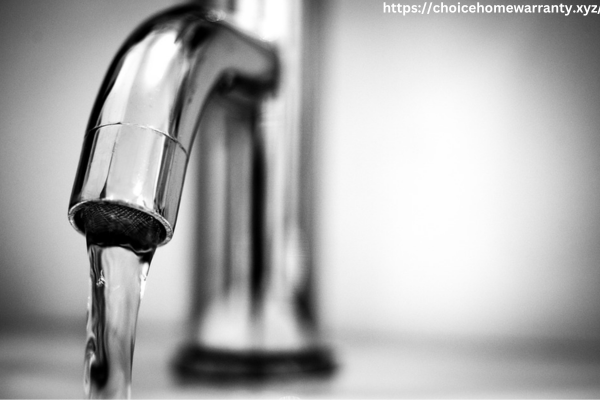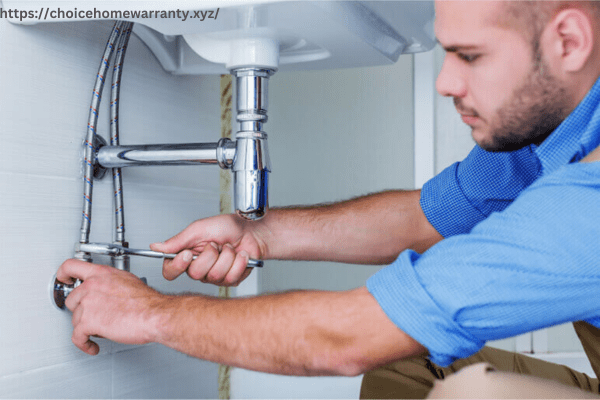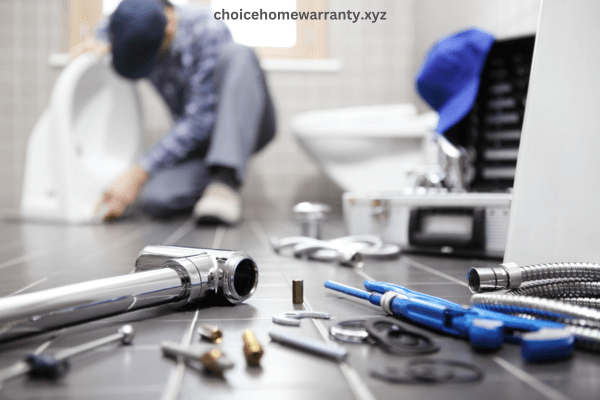To start off by ticking the items on your Plumbing Maintenance Checklist, turn your attention to everyday essentials- toilets and taps. These are fixtures that are continually in use but often overlooked until something goes wrong. Listen for irregular noises when flushing the toilet or running the tap, and look out for leaks, slow drainage, or continuously running water.
A small drip from a leaky faucet can accumulate to an eye-watering water bill over time. Moving on from these highly visible elements leads us to other critical components of our household plumbing system – hot water systems, stormwater drains, and sewage lines. Regularly check the efficiency of your hot water system; erratic temperatures might suggest it needs servicing or replacing entirely for better energy conservation.
Equally important is ensuring that stormwater and sewerage systems are clear of clogs or blockages as they could severely disrupt regular house functioning and maybe even lead to costly property damage due to flooding. Your home’s plumbing system is the unsung hero of your household, ensuring the smooth functioning of daily activities like bathing, dishwashing, and handwashing. However, this vital system often goes unnoticed until issues arise.
To prevent minor problems from escalating into major expenses, it’s crucial to maintain your plumbing system. Here’s a comprehensive checklist that covers essential aspects of maintaining your plumbing system to keep it in top-notch condition.
Understanding the Foundation: Your Home Pipes
A crucial aspect of your plumbing maintenance checklist should be understanding the foundation, i.e., your home pipes. It all commences either at the water main or your private well. Water then navigates through a succession of components such as pressure tanks, water heaters, and water softeners.
This water eventually reaches your living spaces via diverse pipes that supply fixtures like toilets, washing machines, faucets, and showerheads. These pipes, crafted from materials such as lead, copper, or PVC, essentially form the circulatory network for your home’s water supply. Knowing this information is critical in maintaining and troubleshooting any issues within your home’s plumbing system.
The Importance of Regular Plumbing Maintenance
Regular plumbing maintenance is of utmost importance to ensure the smooth functioning of all water and drainage systems in a household or commercial property. A well-structured Plumbing Maintenance Checklist can act as a comprehensive guide to maintaining the health of your pipes, taps, drains, toilets, and more.
By following this checklist regularly, one can effectively prevent any major malfunctions or system failures that could lead to inconvenient disruptions or costly repairs. Thus, regular plumbing maintenance not only contributes to efficient system operations but also enhances the longevity of your plumbing infrastructure.
Plumbing Maintenance Checklist
Maintaining your plumbing system is crucial to avoid unnecessary issues and expenses. A proper plumbing maintenance checklist should include regular checks for leaks, routine pipe inspection, draining the water heater, checking water pressure, inspecting the septic tank, ensuring all drains are clear of clogs and debris, cleaning faucet aerators and shower heads to prevent mineral buildup, and testing sump pumps. By following this checklist, you can ensure the longevity of your plumbing system while maintaining its efficiency.
Checklist Item 1: Inspecting Pipes for Leaks
The first item on our Plumbing Maintenance Checklist is to inspect all pipes for any potential leaks. This process requires a meticulous examination of your home’s entire plumbing system, from the visible pipes under sinks and basements to the hidden ones behind walls and above ceilings. Frequent leak detection can help save future water damage, mold development, and expensive repairs. It is a crucial step in keeping your plumbing system functional and healthy.
Checklist Item 2: Checking Drains and Toilets
On the Plumbing Maintenance Checklist, one of the essential tasks is to check drains and toilets. This imperative step involves inspecting these features for any signs of blockages or leaks, which could potentially lead to more severe damage if left untreated.
Regular checks ensure their optimal functioning and longevity, preventing unnecessary expenses due to major repairs or replacements. It’s not just about maintaining cleanliness but also ensuring your plumbing system’s efficiency and reliability.
Checklist Item 3: Monitoring Water Heater Functionality
Monitoring the functionality of your water heater is an essential item on any plumbing maintenance checklist. Regular checks can help ensure it operates efficiently and effectively, keeping your energy bills low and your showers hot. It’s crucial to look out for signs such as leakage, rust, or strange noises that might indicate a problem with your water heater.
Also, remember to inspect the pressure relief valve and the thermostat settings regularly to avoid any potential issues. Prioritizing these tasks in your plumbing maintenance routine can prevent costly repairs or replacements down the line.
Checklist Item 4: Examining Outdoor Faucets and Sprinklers
In the realm of plumbing maintenance, it is crucial to conduct regular checks on outdoor faucets and sprinklers. They should be examined for any signs of leaks, damage, or unusual activity. This not only ensures efficient operation but also helps in preventing unnecessary water wastage. Regular maintenance also safeguards against potential costly repairs or replacements in the future. Therefore, outdoor faucets and sprinklers are vital components in a comprehensive plumbing maintenance checklist.
Checklist Item 5: Dishwasher and Washing Machine
In the section of your Plumbing Maintenance Checklist dedicated to appliances, it is crucial to pay particular attention to your dishwasher and washing machine. These are two common household appliances that can often be overlooked. Evaluate the hoses connected to both machines, checking for any cracks or leaks that may have formed over time.
Additionally, assess the taps of these appliances for any signs of leakage or damage. Regular inspection and maintenance of these elements can help prevent potential issues down the line, ensuring that your plumbing system continues to function efficiently.
Checklist Item 6: Check Water Pressure
In the Plumbing Maintenance Checklist, one of the crucial tasks is to check your home’s water pressure. This can be done by turning on all taps and showers simultaneously. If you notice that the pressure is low or inconsistent, it might indicate a potential issue with your plumbing system. In such situations, it may be necessary to consider adding a pressure regulator for optimal water flow.
Checklist Item 7: Test Sump Pump
As part of your comprehensive Plumbing Maintenance Checklist, it’s crucial to test your sump pump. Regardless of whether this vital piece of equipment is located in your basement or crawl space, you should pour water into the sump pit to verify its functionality.
Ensure that the pump not only engages but also successfully removes the water. To safeguard your property during power outages, consider implementing a battery backup system for your sump pump. This proactive step will provide enhanced security and peace of mind.

Regular Inspection of Fixtures and Appliances
Forgoing regular scrutiny of your fixtures and appliances is like driving a vehicle without ever changing the oil, ultimately leading to catastrophic system failure. Take charge now by resorting to a Plumbing Maintenance Checklist, an efficient method to ensure that minor drips don’t snowball into major disruptions.
It can guide you through inspecting various components such as faucets, shower heads, and water heaters, assisting in identifying inefficiencies or problems before they escalate, saving significant time and financial resources along the way. A well-crafted Plumbing Maintenance Checklist is akin to a roadmap for household tranquility; guiding your journey through potential mishaps towards the oasis of reliable plumbing systems.
With regular appliance checks and attention to detail, it’s conceivable you’ll preempt leaks or damage before transforming into cost-prohibitive repairs. So, remember, prior planning promotes perfect plumbing! A robust checklist isn’t merely a tool but an investment toward sustainability and peace of mind that every homeowner rightfully deserves.
Recommended Tools for Basic Plumbing Maintenance
Investing in the right tools to handle basic plumbing problems can be a game-changer. Preventive maintenance can save you aggravating midnight malfunctions and expensive repair bills down the line. Our Plumbing Maintenance Checklist encompasses essential tools that will adeptly equip homeowners for most ordinary plumbing challenges.
From an authentic pipe wrench, and adjustable wrench to Teflon tape and plungers, each of these items on our checklist is indispensable to operate routine fixes like tightening pipes or clearing blocked drains. Different types of plungers are crucial for specific tasks; a cup plunger for sinks and bathtubs, and a flange or toilet plunger for those difficult toilet clogs.
Also included in our list are Basin Wrench, Plumber’s Snake (Drain Auger), and Pipe Cutter. Jot down some notes as we delve deeper into the world of basic plumbing solutions! You won’t regret having these tools within arm’s reach when inevitable plumbing issues arise.
The Role of a Professional in Maintenance
A professional plays a critical role in maintenance, particularly when it comes to plumbing. They are equipped with the right skills and knowledge to inspect and keep your plumbing system running smoothly. This is where a Plumbing Maintenance Checklist comes into play. The checklist serves as a guide for professionals to ensure that all aspects of the system, such as pipes, fittings, drains, water heaters, faucets, toilets, showers, and bathtubs among others are thoroughly examined and well-maintained.
This systematic approach helps prevent potential issues from escalating into major problems which can be costly and disruptive. Therefore, the role of a professional in maintenance using a Plumbing Maintenance Checklist is crucial for the longevity of your plumbing systems.
Preventive Measures to Avoid Plumbing Issues
To avoid encountering plumbing issues, it is crucial to take preventive measures and follow a plumbing maintenance checklist. Regular pipe inspections for blockages, leaks, and corrosion can help prevent more significant issues later on. Additionally, it’s important to monitor and confirm that your home’s water pressure is at a safe level.
Cleaning your drains on a regular basis will assist in avoiding buildup, which can cause clogs and overflow. Additionally, make sure your sump pump is working properly, especially before rainy seasons. In colder climates, insulate your pipes to protect them from freezing and bursting. This preventive maintenance can save you from expensive repairs and inconvenience in the long run.
Value and Vulnerability
It’s surprising to learn that your home’s plumbing system accounts for 15% of its overall worth. Therefore, safeguarding this value needs to be of utmost importance. One of the first steps in maintaining it is vigilant leak detection.
It’s surprising that easily fixable leaks lead to nearly 1 trillion gallons of water waste every year in U.S. households, which can potentially cause significant damage to homes. Therefore, having and following a Plumbing Maintenance Checklist can help safeguard your home and its value.
The Leak Menace: Statistics and Impact
The menace of leaks is a significant issue facing many households. On average, a household loses nearly 10,000 gallons annually due to this problem, resulting in inflated water bills. To provide some context, the amount of water lost could be used to operate approximately 300 laundry loads. For example, a faucet that drips once every second can waste over 3,000 gallons in a year – sufficient for around 180 showers.
However, it’s important to note that not all leaks are easily detectable, particularly those hidden from sight. Therefore, it becomes crucial to recognize the signs of potential leaks as part of a comprehensive Plumbing Maintenance Checklist.
Detecting Leaks: Indicators and Measures
In the process of detecting leaks, there are certain indicators and measures that you can apply. One effective method is to closely monitor your water bills for any unusual spikes in usage, which could potentially indicate a leak. Another beneficial strategy is to conduct water meter readings during periods when water usage is low or non-existent as this could also reveal potential leaks.
Furthermore, it’s crucial that all members of your household are aware of the location and functionality of water shut-off valves. This knowledge can be instrumental in averting extensive damage should a pipe burst unexpectedly. These steps form an essential part of any plumbing maintenance checklist.
The Maintenance Protocol: Your Plumbing Checklist
Maintaining your plumbing system is not just a one-time task, but rather a continuous process that involves a range of activities, from daily checks to annual inspections. These activities aim at ensuring the seamless operation of your plumbing system, preventing potential issues, and averting costly repairs down the line.
We have compiled a checklist that provides a systematic approach to maintaining your plumbing system, offering you an effective strategy for preventative care and maintenance in an easy-to-follow format. This Plumbing Maintenance Checklist is designed to keep your system running smoothly and efficiently.
Daily Checks: Seeking Out Leaks
As part of your daily checks in the Plumbing Maintenance Checklist, it is crucial to actively seek out leaks. Regular inspections should be conducted in common areas that are prone to leaks. These include faucets, toilet flappers, shower heads, and pipe fittings. By adopting a vigilant approach in these areas, you can prevent minor leaks from escalating into major issues that could potentially cause significant damage to your property.
Annual Inspections: Comprehensive Review
Under the category of Annual Inspections in our Plumbing Maintenance Checklist, we strongly advise conducting comprehensive reviews at regular intervals. This involves carrying out in-depth checks in areas that may often go unnoticed.
From walls, windows, and doors to connections in appliances such as dishwashers, washing machines, and refrigerators, these thorough inspections are crucial in identifying potential sources of leaks or water damage. Never underestimate the importance of a meticulous inspection routine when it comes to maintaining your plumbing system’s efficiency and longevity.
Longevity through Vigilance
Longevity through Vigilance is an essential principle that underlines the importance of a proactive stance in plumbing maintenance. This approach not only helps you avoid sudden and unexpected expenses but it also significantly extends the life span of your entire plumbing system.
By identifying and addressing potential issues during their early stages, you can ensure a smoothly running household, effectively averting any impending crises. Therefore, using a Plumbing Maintenance Checklist is highly recommended to keep track of and maintain the optimal functionality of your plumbing system.

Conclusion
Adhering to a regular plumbing maintenance checklist can save homeowners from expensive and inconvenient repairs. By conducting routine checks on your pipes, faucets, water heaters, and drains, you ensure the longevity of your plumbing systems and prevent minor issues from escalating into major problems.
Always remember that preventative care is much more cost-effective than emergency repairs. Don’t hesitate to seek professional help if you encounter any complex plumbing issues. Start implementing these maintenance strategies today and enjoy smoother and more efficient plumbing operations in your home.
FAQs About Plumbing Maintenance Checklist
How often should I conduct plumbing maintenance?
Twice a year is recommended for comprehensive plumbing checks.
What are the signs of a blocked drain?
Slow drainage or overflowing water are indicators of potential blockages in drains.
Why is checking for leaks important?
Identifying leaks early prevents water damage and the potential escalation of minor issues.
When should I call a professional plumber?
Upon noticing any irregularities or issues during your maintenance checks, it’s advisable to seek professional help.
How can regular maintenance save costs?
Regular checks help identify and resolve small issues before they transform into more extensive, expensive problems, thereby saving time, stress, and money in the long run.
How often should I check for leaks in my home?
Regularly inspect areas prone to leaks such as faucets, toilets, and pipe fittings, ideally monthly.
Why is it essential to monitor water bills for spikes in usage?
Unexplained increases in water usage could indicate potential leaks, prompting timely intervention to prevent major issues.
What steps can I take to prevent damage in case of a burst pipe?
Ensure all household members are aware of the location and operation of water shut-off valves for quick action in emergencies.
Can leaks go undetected despite regular checks?
Yes, some leaks might remain hidden. Therefore, annual comprehensive inspections are crucial to identify concealed leak sources.
How does vigilant plumbing maintenance contribute to cost savings?
Early leak detection and timely repairs prevent water wastage, leading to reduced water bills and avoiding potential costly damages.

Hello! I simply would like to offer you a big thumbs up for your great info you
have here on this post. I will be coming back to your blog for more soon.